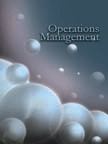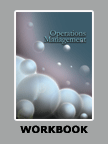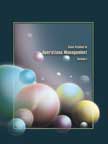Operational Restructuring: The Philips India Way




|
|
ICMR HOME | Case Studies Collection
Case Details:
Case Code : OPER019
Case Length : 11 Pages
Period : 1997 - 2002
Organization : Philips India
Pub Date : 2002
Teaching Note : Available
Countries : India
Industry : Consumer Electronics
To download Operational Restructuring: The Philips India Way case study
(Case Code: OPER019) click on the button below, and select the case from the list of available cases:

Price:
For delivery in electronic format: Rs. 300;
For delivery through courier (within India): Rs. 300 + Rs. 25 for Shipping & Handling Charges
» Operations Case Studies
» Case Studies Collection
» ICMR HOME
» View Detailed Pricing Info
» How To Order This Case
» Business Case Studies
» Case Studies by Area
» Case Studies by Industry
» Case Studies by Company
Please note:
This case study was compiled from published sources, and is intended to be used as a basis for class discussion. It is not intended to illustrate either effective or ineffective handling of a management situation. Nor is it a primary information source.
|
|
<< Previous
"We always had the best of products. Clogged systems were
running the company to the ground."
- Rajeev Karwal, Senior Vice-President, (Consumer
Electronics), Philips India, in May 2002.
Background Note
|
With revenues of Rs 16.65 billion for 2001-02, Philips India Ltd (PIL) had
established itself as a leading manufacturer of consumer electronics and
electrical goods in India. A subsidiary of the Holland-based Philips NV, PIL has
dominated the Indian consumer electronics and lighting industry for more than
six decades.
PIL, with a product portfolio of audio systems, color televisions (CTVs),
loudspeakers, printed circuit boards, various kinds of lamps, electronic
components and electro-medical apparatus, had acquired considerable popularity
and loyalty among Indian customers. PIL was established as Philips Electricals
Co. (India) Ltd. in 1930 by Philips NV as a wholly-owned subsidiary.
|
|
The company's name was changed to PIL in September 1956 and it was converted
into a public limited company in October 1957. After being initially
involved only in trading, PIL set up manufacturing facilities in several
product lines. PIL commenced lamp manufacturing in 1938 in Kolkata and
followed it up by establishing a radio factory in 1948. It set up an
electronics components unit at Loni, near Pune, Maharashtra in 1959. It
began producing electronic measuring equipments at the Kalwa factory in
Maharashtra in 1963. The company subsequently ventured into
telecommunication equipment manufacturing at a unit in Kolkata.
|
|
During the
1980s, Foreign Exchange Regulation Act (FERA) regulations1
forced PIL to bring down the foreign share holding to 40%. Philips NV
directed PIL to change its name to Peico Electronics & Electricals (Peico).
However, Peico was allowed to sell its products under the 'Philips'
brand. In May 1982, Peico acquired the Kolkata-based Electric Light
Manufacturing Industries (ELMI) and made it a 100% subsidiary. In
1988-89, Peico recorded its first ever pre-tax loss of Rs 170 million,
largely due to poor management and overstaffing. However, cost cutting,
organizational restructuring and sale of real estate enabled it to post
profits in the next two years. In 1993, its foreign equity stake was
raised to 51% and the name was changed back to PIL. |
Operational Restructuring: The Philips India Way
- Next Page>>
|
|



